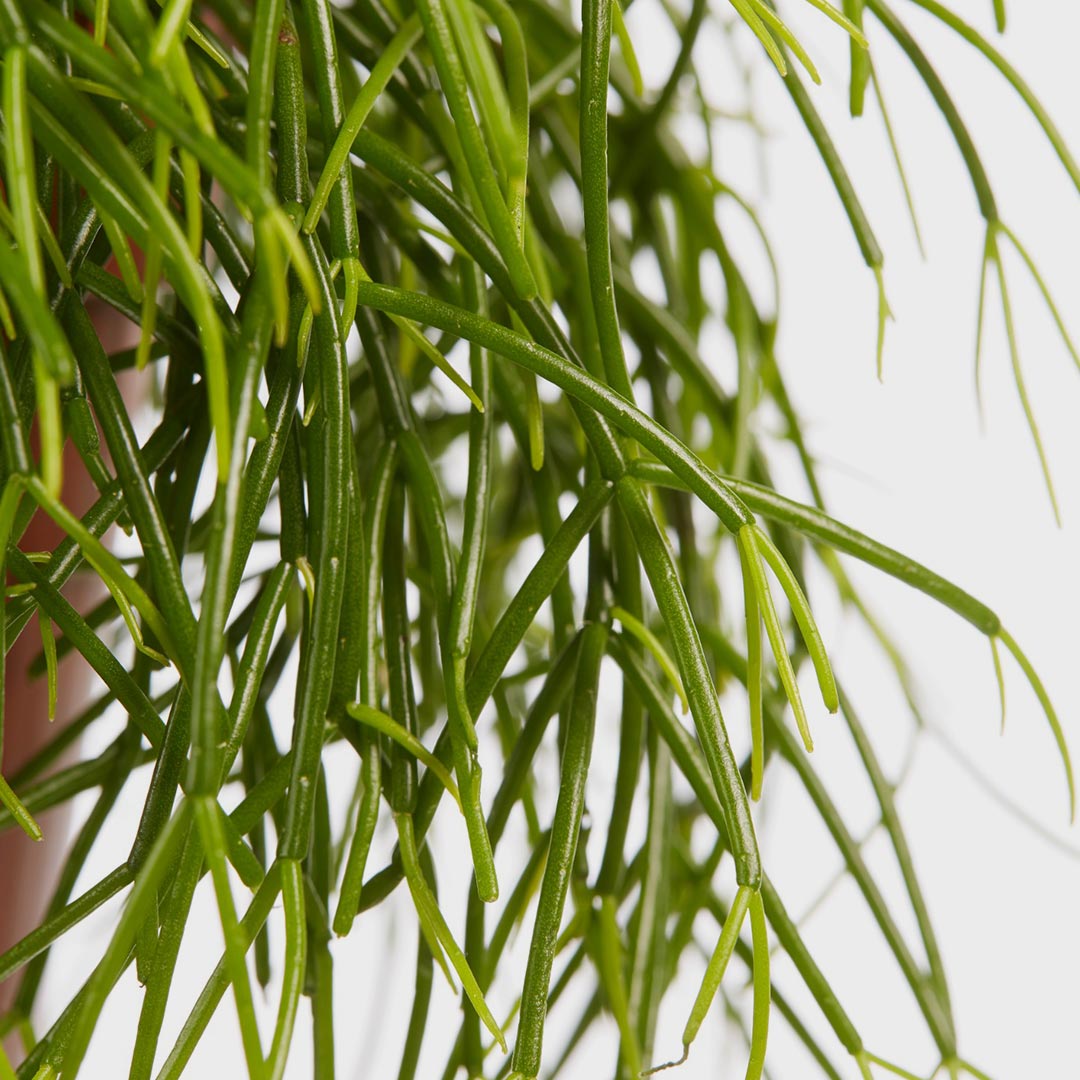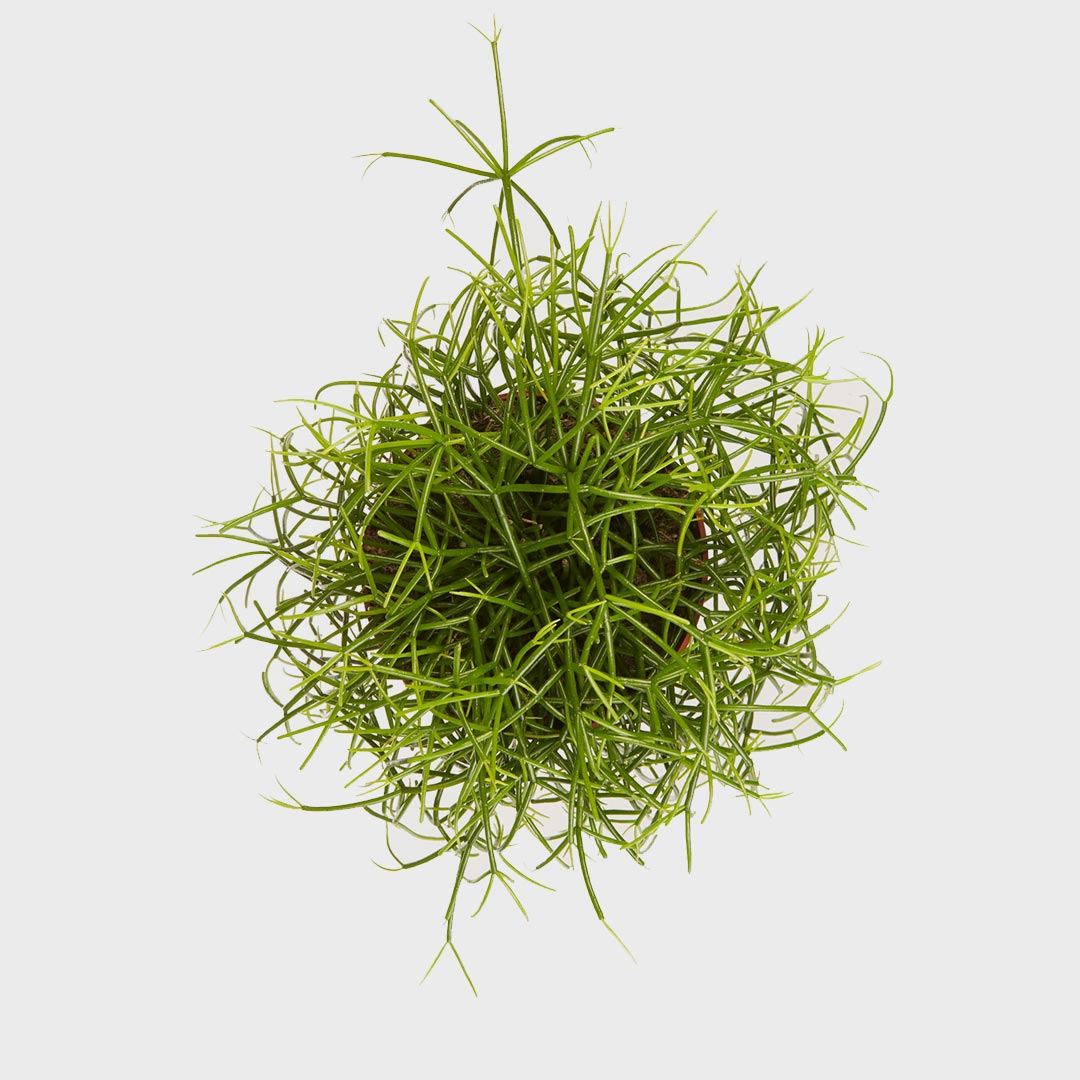
Deliver to
Austria
 English
English

In Brazil, South and Central America the Rhapis grows in nature. Although the plant has a long history in Florida too. There are only 60 species of the Rhipsalis. You can recognize the Rhipsalis by its elongated leaves. The Rhipsalis belongs to the genus of cacti, which makes it very easy to care for.
Medium light
Water once a month
Toxic
Air-purifying
A Rhipsalis can grow on almost every location. From medium bright light to partial shade. We recommend to avoid direct sunlight, as this can harm the leaves of the Rhipsalis.
Being a cactus, there’s a common misconception that they don't need much water to grow. Even though a Rhipsalis can hoard moisture for drier climates or drought-like conditions, it certainly can't live with just a little water. However, it doesn’t like being drowned in too much water either.
It is best to water a Rhipsalis every month in the growing season, from spring to summer. In the fall and winter it is best to only water the plant once every 3 months.
Being a cactus, a Rhipsalis is low-maintenance and doesn't need much nutrients. However, any good plant nutrition diluted to half of the recommended strength can be a nice addition for your Rhipsalis. Fertilizing a Rhipsalis once or twice a year is enough.
Repotting the Rhipsaslis is necessary every 2 years. Repotting the plant every 2 years gives it new nutrients and more room for root growth. The airier soil is also very good for the water flowing through. The best period to repot is spring.
The most ideal temperature for a Rhipsalis plant, also known as the Mistletoe Cactus, is typically between 15 to 24 degrees Celsius. It prefers a moderate temperature range and can tolerate slightly cooler conditions.
Pruning a Rhipsalis is not necessary for its growth. However, occasional pruning helps remove any dead or damaged branches, encourages bushier growth, and maintains an attractive shape. Trimming back long leaves can also help the plant maintain a compact form.
The Rhipsalis is not excessively susceptible to diseases and pests. Should the plant still suffer from pests, then you can use pesticide. Although pesticide can mean the end of the plant. Therefore, be careful.


Yes, it can. In the summer months the Rhipsalis can be placed outside on a terrace or balcony. Make sure that you let the Rhipsalis get used to its new environment. The full sun can burn the leaves of the Rhipsalis.
Rhipsalis is an easy plant to take cuttings from. You can simply cut off one or more of the leaves. Let the leaves dry well and then place them in a pot with soil. Read more about how to propagate a Rhipsalis.
If the environment is too moist for an indoor plant, mealybugs may develop. The same can happen to a Rhipsalis plant. In case of mealybugs always give less water.